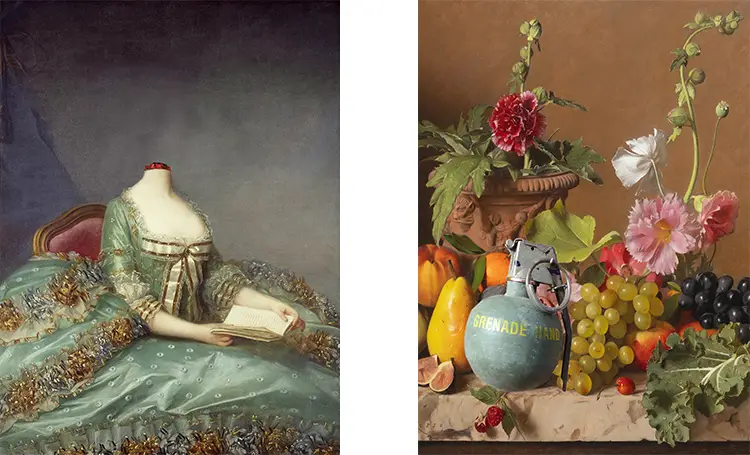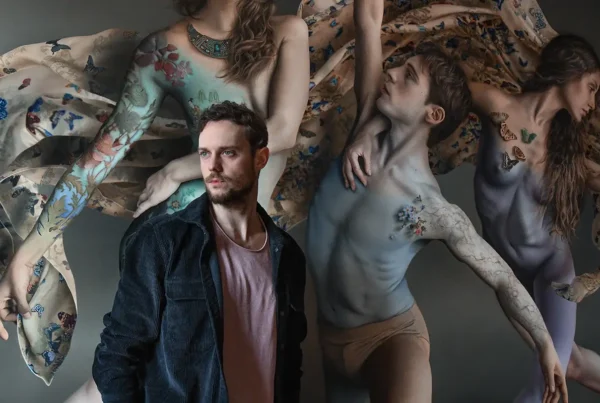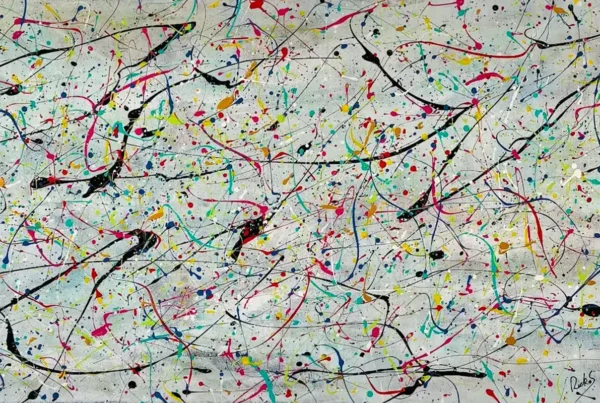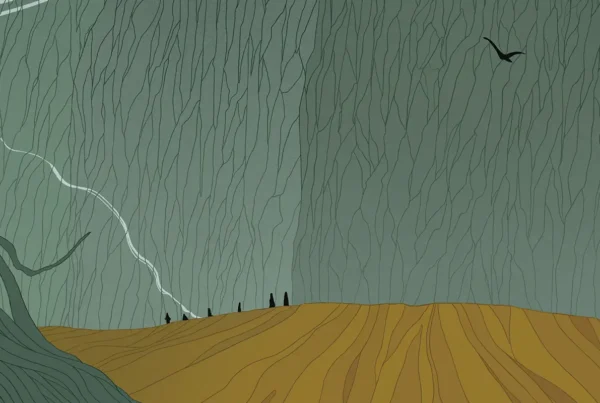“The main themes in my work are a critique of consumerism and propaganda, the importance of historical memory, and an analysis of new forms of totalitarianism disguised as entertainment.”
A Stage Reimagined: From Theater to Visual Dissent
Max Papeschi’s entry into the world of contemporary art was anything but traditional. With a career rooted in theater, television, and film, Papeschi brought with him a distinct command of narrative, image, and performance. These foundational disciplines continue to shape his artistic voice, but now they manifest in provocative visual installations, digital compositions, and multimedia experiences. Each work unfolds like a meticulously staged scene, crafted to unsettle, astonish, or confront. The influence of the stage persists, not through scripts and actors, but through visual storytelling that collapses the boundary between satire and critique. His art does not merely exist to be seen—it demands to be interpreted, often acting as a mirror to society’s darkest contradictions.
The accidental beginning of Papeschi’s art career in 2008 was a pivotal moment that set the tone for a deeply ironic and incisive practice. While promoting a theater production on MySpace, he designed several digital collages—works not originally intended as standalone art pieces. However, when a Milan gallery mistook these images for artwork and offered him an exhibition, Papeschi embraced the unexpected opportunity. What followed was a rapid ascent into the art world, fueled by a bold aesthetic that mixed familiar pop culture symbols with unsettling historical references. Over time, this visual language matured into a powerful instrument for cultural criticism, with Papeschi exposing the grotesque undercurrents of mass entertainment and political power structures.
His day-to-day practice reflects an unrelenting investigation into the mechanisms of manipulation—how images are constructed, consumed, and weaponized. Research plays a central role, with historical archives and contemporary visual culture providing raw material. Collaboration is also integral; working with designers, technicians, and curators allows Papeschi to expand the scope of each project, transforming ideas into immersive visual experiences. His ultimate aim is to craft images that don’t simply work on an aesthetic level but serve as cognitive triggers, prompting viewers to question their complicity in the ideologies embedded in everyday imagery.
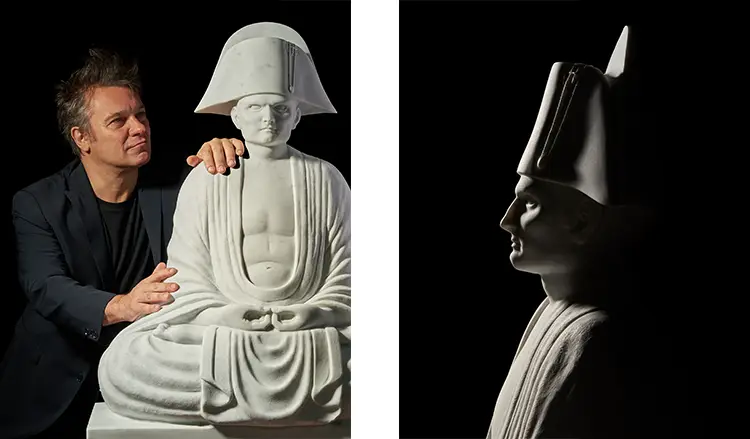
Max Papeschi: Icons, Irony, and the Machinery of Control
Papeschi’s work is defined by an unwavering commitment to exposing the contradictions embedded within consumer society and media spectacle. He appropriates cultural icons—cartoon characters, corporate mascots, advertising tropes—and mutates them into grotesque hybrids that reflect the underlying violence of seemingly benign imagery. These reimagined figures are not just satirical—they’re cautionary symbols, illuminating how entertainment and propaganda often merge in contemporary life. By altering familiar images, Papeschi reveals the dissonance between appearance and intent, urging viewers to reconsider what they consume and why. His art becomes a site where collective memory, historical trauma, and capitalist seduction collide.
A central theme across his body of work is the dangerous overlap between entertainment and authoritarianism. Through series such as La Société du Spectacle, Papeschi engages with theorists like Guy Debord to dissect how media shapes public perception. The artist frequently revisits the atrocities of the twentieth century—particularly fascism, Nazism, and Stalinist communism—not to provoke outrage for its own sake, but to explore how these regimes relied heavily on visual manipulation. His notorious piece NaziSexyMouse, which triggered international controversy after being displayed in Poland, encapsulates this ethos. The image—juxtaposing Mickey Mouse’s face with Nazi symbolism—forces a reckoning with the way totalitarian ideologies infiltrate cultural symbols and aesthetic language.
Yet, for all its darkness, Papeschi’s work does not retreat into nihilism. Instead, it asserts the necessity of memory and resistance. His practice functions as a warning system, dramatizing what happens when societies forget or sanitize the past. Artworks like From Hiroshima with Love offer altered historical photographs that, while absurd on the surface, uncover deep cultural manipulations. By placing Kermit the Frog in place of a soldier or Hello Kitty in police custody, Papeschi exposes the banality through which violence can be masked. His goal is not to desecrate history, but to underscore how easily truth is distorted when mediated through corporate and political filters.
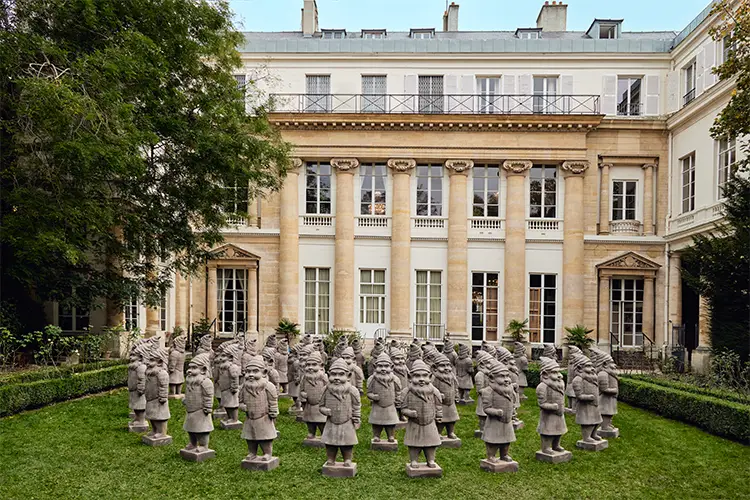
Revolution by Design: Staging Satire in the Political Theater
Papeschi’s projects extend beyond gallery walls, often invading public spaces with a kind of guerrilla-style theater that turns cities into backdrops for visual protest. One of his most impactful ventures, Welcome to North Korea, exemplifies this strategy. Originally developed with Amnesty International, the project employed a full range of media—billboards, merchandise, video art, installations, even a satirical website—to parody the aesthetics of North Korean propaganda. In Milan, his promotional campaign included a flash mob in front of a child’s inflatable bounce house designed to mimic a prison camp. The project was presented with Papeschi acting as a fictional ambassador of the DPRK’s Ministry of Propaganda, turning the spectacle of dictatorship into a grotesque commercial brand. This inversion of political horror and consumer parody proved both chilling and effective, highlighting how authoritarian messages often arrive in the guise of entertainment.
The artist continued to develop this fusion of advertising language and political critique in Eau de Eau, a 2025 collaboration with Arianna Bonucci. Framed as a high-end perfume launch, the project addressed the global water crisis by mimicking the seductive visual language of luxury marketing. Glossy fashion photographs, elegant packaging, and stylized installations all served a singular purpose: to critique the commodification of a basic human right. The work disturbed precisely because it looked so polished, revealing how capitalism can absorb even the most urgent humanitarian emergencies into its machinery. By disguising critique as glamour, Papeschi and Bonucci underscored the ethical blindness embedded in aspirational consumer culture.
His fascination with contradictions—beauty cloaking brutality, joy disguising control—continues to evolve in new directions. Extinction – Chapter One, launched in 2023, marked the beginning of a project that imagines how an alien civilization might interpret the remains of humanity. The premise allows Papeschi to reflect on our legacy, asking whether the images we leave behind will tell a story of progress or pathology. The project is not merely speculative fiction; it’s a philosophical inquiry into the myths we construct and the ruins we inevitably become. Through futuristic concepts grounded in historical awareness, Papeschi challenges the viewer to contemplate what kind of civilization we truly are.
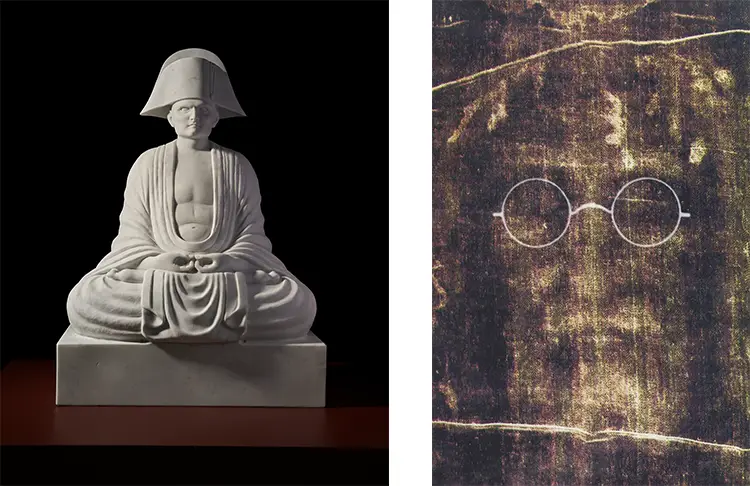
Max Papeschi: Memory, Spectacle, and the Afterlife of Images
Papeschi’s approach to art is inseparable from his understanding of how memory operates in a society governed by screens and distractions. He contends that remembering is not simply about facts—it’s about recognizing how narratives are shaped, distorted, and sometimes erased by those in power. His artistic strategy involves reactivating that memory through images designed to jolt the viewer into awareness. In works such as Sold Out, selected for the cover of Pnina Rosenberg’s Art and the Holocaust, Papeschi critiques the commercialization of tragedy, questioning how historical trauma is consumed in the age of image saturation. Rosenberg’s subsequent essay, “Mickey on Stage,” explores this dimension of his work, highlighting the ethical complexity Papeschi navigates.
This interplay between spectacle and ethics is further complicated by Papeschi’s recurring use of childhood imagery—characters like Hello Kitty or Disney icons—that are universally recognized yet politically neutralized. By placing these figures into violent or oppressive contexts, he ruptures their innocence, reintroducing a moral dimension to symbols that have been drained of meaning through overexposure. His reinterpretations are not simply shocking—they are surgical interventions designed to disrupt the passive reception of familiar images. The viewer is compelled to reconcile their emotional attachment to these icons with the historical and political contexts Papeschi forces upon them.
Looking forward, Papeschi aims to expand his projects into more immersive formats, including augmented and virtual reality. These emerging tools allow for deeper engagement, blurring the line between spectator and participant. His ongoing Extinction series, as well as future projects modeled after Eau de Eau, will continue to experiment with this immersive strategy. The goal is not technological novelty but a more potent form of storytelling—one that disorients, reorients, and ultimately forces confrontation with uncomfortable truths. In Papeschi’s vision, art is not a refuge from the world’s contradictions but a direct engagement with them, a form of memory work that refuses to be silent or complicit.
